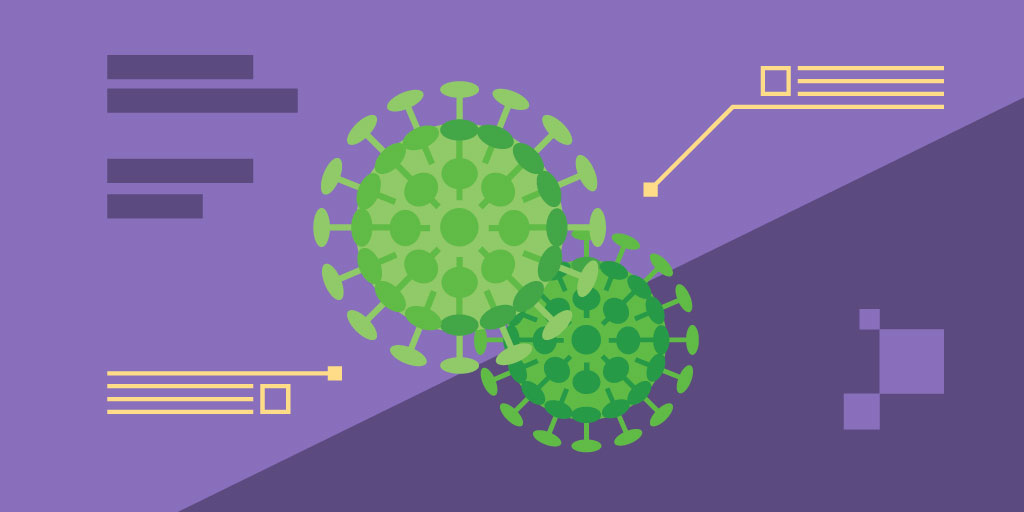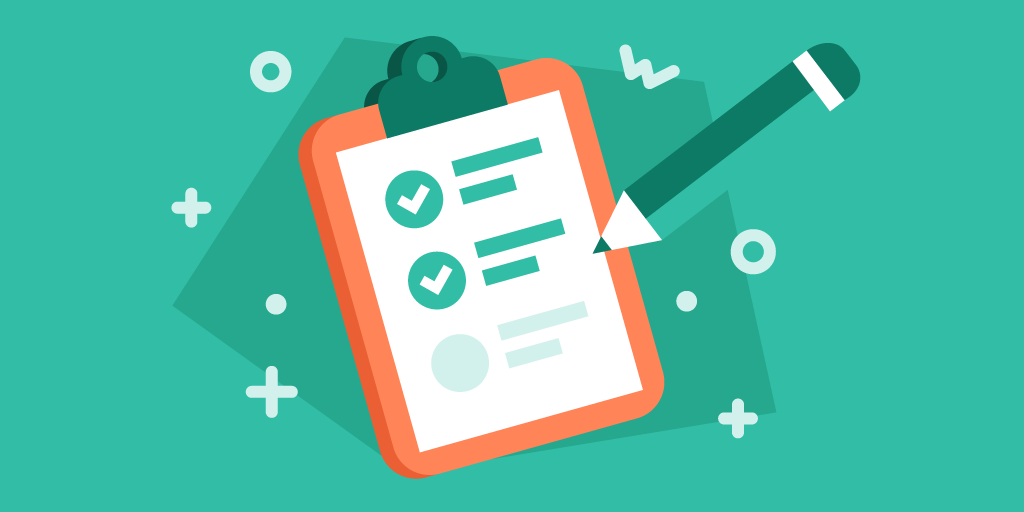As businesses try to stay open amid COVID-19, safety quickly became a point of contention.
While people who work from home feel relatively safe, people who work in delivery are left exposed. As the latter deliver the goods to the former, they run the risk of getting infected.
Thankfully, one of the delivery options — curbside pickup — offers a middle ground, allowing for both customers and employees to stay safe during COVID-19.
In this article, we’re going to find out:
How curbside pickup works
The pros of curbside pickup
The cons of curbside delivery
How to best implement it for your business
Shoppers and employees both need safe queuing conditions. Sign up for a free 14-day trial of Qminder to build a safer environment now
How curbside pickup works
Curbside pickup works a lot like home delivery. You select a list of products you’d like to order, add them to your online shopping cart, then pick an available time slot.
The process of getting your order is a bit different than delivery but requires no face-to-face interactions or close proximity to other people:
Pull up your car to a designated parking spot.
Contact the pickup provider to let them know you’ve arrived.
A delivery agent brings your groceries and loads them into your car.
Pay, say your thanks, and drive off.
Most curbside pickup providers also offer home delivery and bring your order right to your home. The groceries can be left at the front door, with no customer signature required.
Doorstep delivery is a good way of practicing social distancing in light of the recent COVID-19 outbreak. This way, shoppers can continue to stay safely at home during the quarantine period while still getting all the groceries they need.
Why is curbside pickup building traction?
Even before the COVID-19 pandemic, shoppers have been increasingly using grocery delivery and pickup services. An Offers.com survey from January found that 46% of shoppers have used the curbside pickup service.
When the coronavirus outbreak grew too big to ignore it, click-and-collect and curbside pickup orders jumped 87% between late February and March 29. Even the number of people googling the term “curbside pickup” has tripled.
And now, popular retailers like Kohl’s, Target, Best Buy and many more have started providing curbside pickup at their stores.
What made it so popular all of a sudden, and why do companies adopt curbside services amid COVID-19?
PRO 1: Safe shopping experience
The chief reason for the service’s popularity is that curbside pickup and home delivery are, right now, the surest options for a safer shopping experience. This new way of getting groceries allows both shoppers and staff to practice social distancing.
Curbside pickup and delivery help minimize the time spent in stores and lower the number of people in the aisles, thus reducing the risk of contamination.
Even without taking the risk of COVID-19 into account, shops are now modifying their business hours, thus it is not always possible to stock up when needed.
Curbside pickup is more lenient when it comes to operating hours, offering flexibility that supermarkets by themselves cannot provide.
PRO 2: Adopting curbside helps businesses stay afloat
Restaurants and bars have been among the businesses hit the hardest. The National Restaurant Association estimates that during the first 22 days of March, the restaurant industry lost 25 billion dollars in sales and more than three million jobs.
Fast-food juggernauts like McDonald’s and Burger King also rely on consistent traffic — which has been declining even before the coronavirus outbreak. If forced to close down temporarily, their cash on hand would be enough to pay rent and salary for only a few months.
It could be argued that restaurants are essential business, as certain groups, including healthcare workers, rely on fast-food chains to get quick food.
In an effort to keep the lights on and be able to pay their staff, many restaurants and cafes also opt for a drive-thru option. As they cannot let people dine in because of the social distancing mandates, restaurants resort to offering takeouts/carry-outs via curbside pickup.
Encouraging shoppers to spend as little time inside your business as possible seems counterintuitive, but such are the cards we’ve been dealt.
Restaurants bringing orders to the customers’ cars isn’t exactly a novel concept. In the first half of the 20th century, it was known as a carhop — a waiter serving people in their cars at drive-in restaurants.

A carhop servicing customers, as shown in American Graffiti (1973)
Offering curbside pickup services is the way for restaurants, bars and cafes to stay open and operate, even if at a reduced level. As the crisis is unprecedented, so too must be the solutions.
PRO 3: No panic buying or hoarders
With regular in-store shopping in times of pandemic, there’s a risk of panic buyers caused by COVID-19. Ironically enough, we’re dealing with yet another type of contagion, as panicky behavior is highly infectious.
This leads to infamous photos of empty shelves where toilet paper used to be. (Strangely, dramatic photographs don’t help with alleviating the sense of uncertainty and fear.)
Although shops have since then updated their restocking policies, you can never be sure when the human factor is involved.
While curbside pickup and home delivery may also experience some time slot availability issues (more on that below), they are much more consumer-friendly in this regard. Curbside pickup does not favor hoarders and panic buyers, making sure that everyone has access to essential items and foods.
PRO 4: Comfort and expediency equals loyalty
Lastly, there’s a matter of customer retention. In these times, brands that offer contactless pickup are synonymous with convenience.
Sooner or later, the pandemic will end and the lockdown will be lifted, but the good will that companies have earned during this period will remain.
We can only speculate as to how the shopping paradigm will shift after coronavirus, but curbside pickup may become the new normal. The fact that it offers convenience in these turbulent times means that it will stay as convenient, if not more so, once things go stable.
A lot of customers have been extremely appreciative, because it makes them feel really safe not going inside the store and touching everything other people have touched. I think it gives them peace of mind.”
The cons of curbside pickup delivery
Businesses who plan to adopt contactless delivery services have to know that there are downsides to curbside pickup, too.
CON 1: The order might not be ready on time
This is, by far, the biggest problem of curbside pickup services. Pre-coronavirus, retailers were fulfilling orders in a matter of hours. Now it can take more time, as open time slots are quickly filled by people in need.
People rely more and more on curbside, overloading the flow and taking up available time slots. The current delivery force is not enough to satisfy the demands of an ever-growing shopper base.
Even top retailers, like Target with its Drive Up, have had delays in completing orders because of the increasing demand.
It’s a classic Pyrrhic victory: curbside pickup providers succeed so much, it sets them up for failure.

Many grocers are offering curbside pickup, but the issue is that websites can’t put the highest volume items online because they sell out so quickly, so that limits the appeal of online grocery shopping.
CON 2: Curbside pickup websites cannot handle the traffic
Another issue is the inability of delivery providers to handle the demand on a technical level. Especially in smaller towns where there may only be one or two delivery providers available.
This results in overbooking and, ultimately, delays.
A friend of mine from one such town has said that the entire website of the provider he’s using crashes after midnight, as people flock in to place their orders.
Not every store and supermarket is quick to adopt this delivery option, either. It takes time to develop the system from scratch and train your staff while adhering to stricter-by-the-minute safety guidelines.
To solve these and more problems, small businesses and restaurants need to learn how to manage incoming inquiries efficiently when adopting curbside services.
Smaller businesses offering curbside delivery operate quite similarly to click-and-collect businesses, where customers order something online and come to a designated location to pick it up.
To combat the adverse effects of the coronavirus outbreak, digital queue management systems like Qminder now offer safe, remote queuing amid COVID-19. Customers visit businesses’ sign-in pages, check into queues, provide all the info needed, and are then updated on their progress via SMS messaging.
Qminder has been put to great use by such click-and-collect providers like Takealot. The flexibility of virtual queues, coupled with SMS communication with clients, builds a solid foundation for a safe queuing experience.
With SMS messaging, your business can request additional info from customers, inform them about delays or changes, and ask for feedback.
All of that while they can stay safely in their cars.

As there is still time to go before the current coronavirus crisis dies down, it is time not to throw in the towel but to reassess our approach.
In the coming months, and perhaps even after that, safe and contactless queuing will be the deciding factor in customer retention.
Opting for curbside pickup and delivery is a matter of survival, not convenience.






